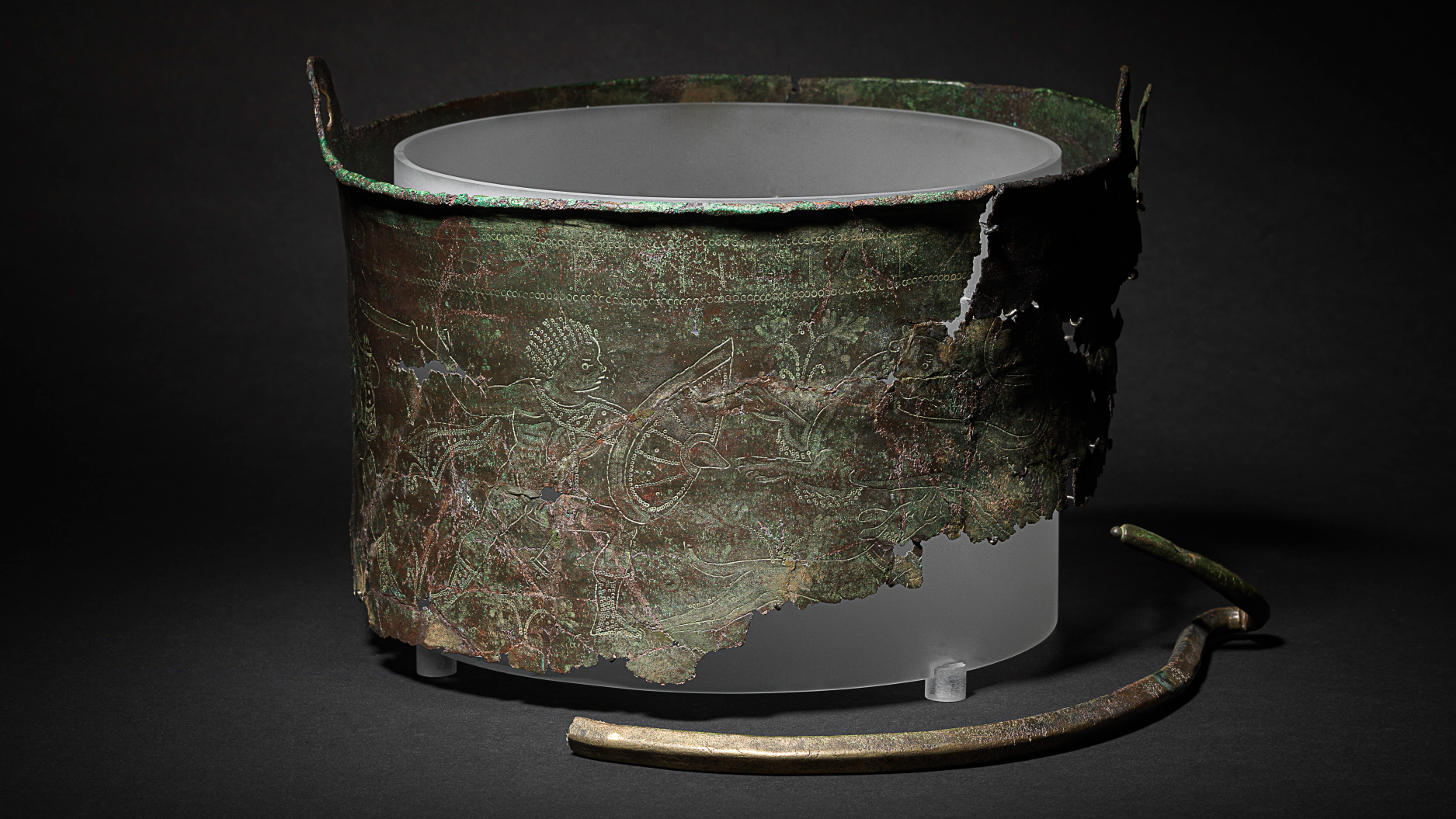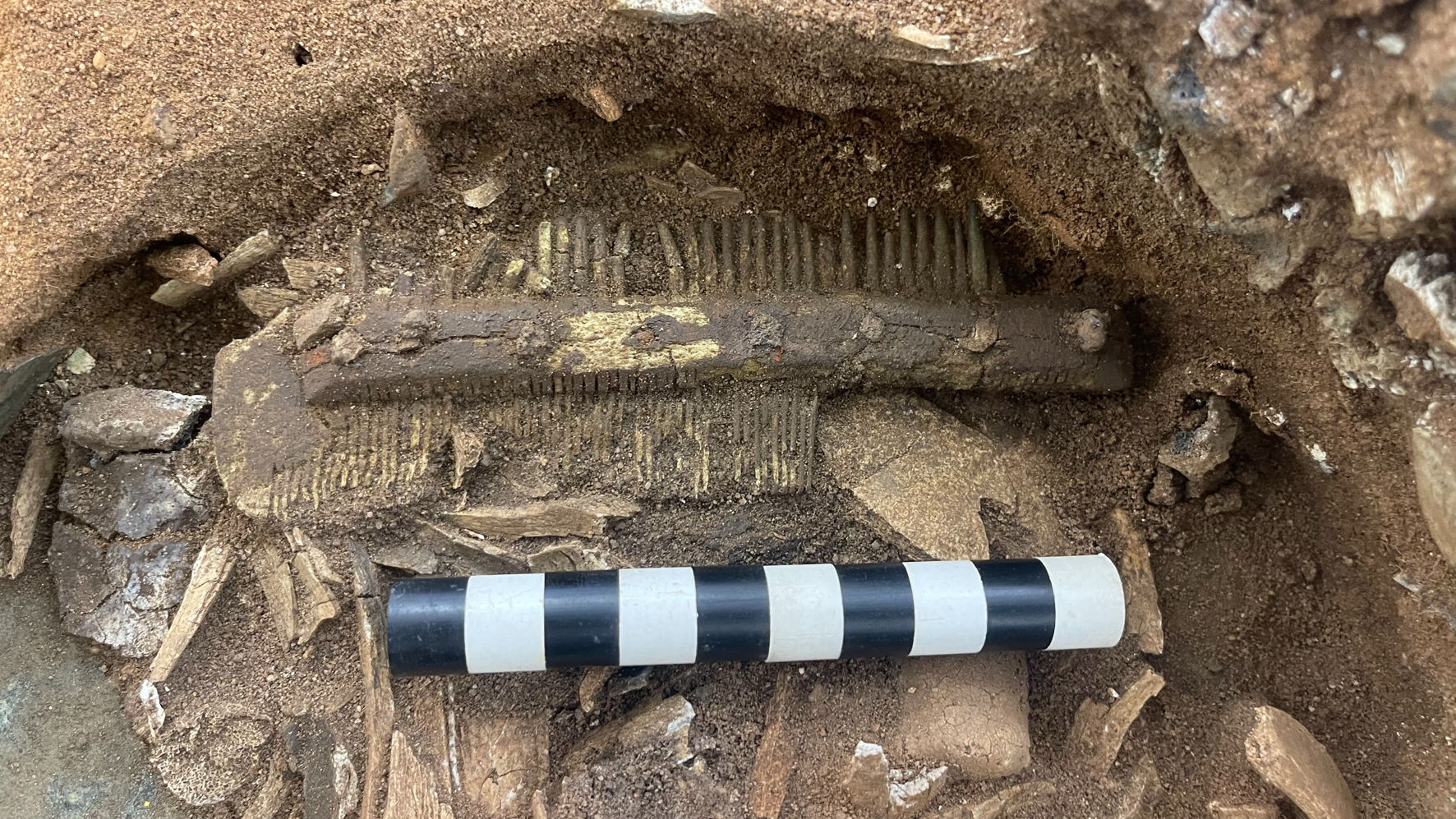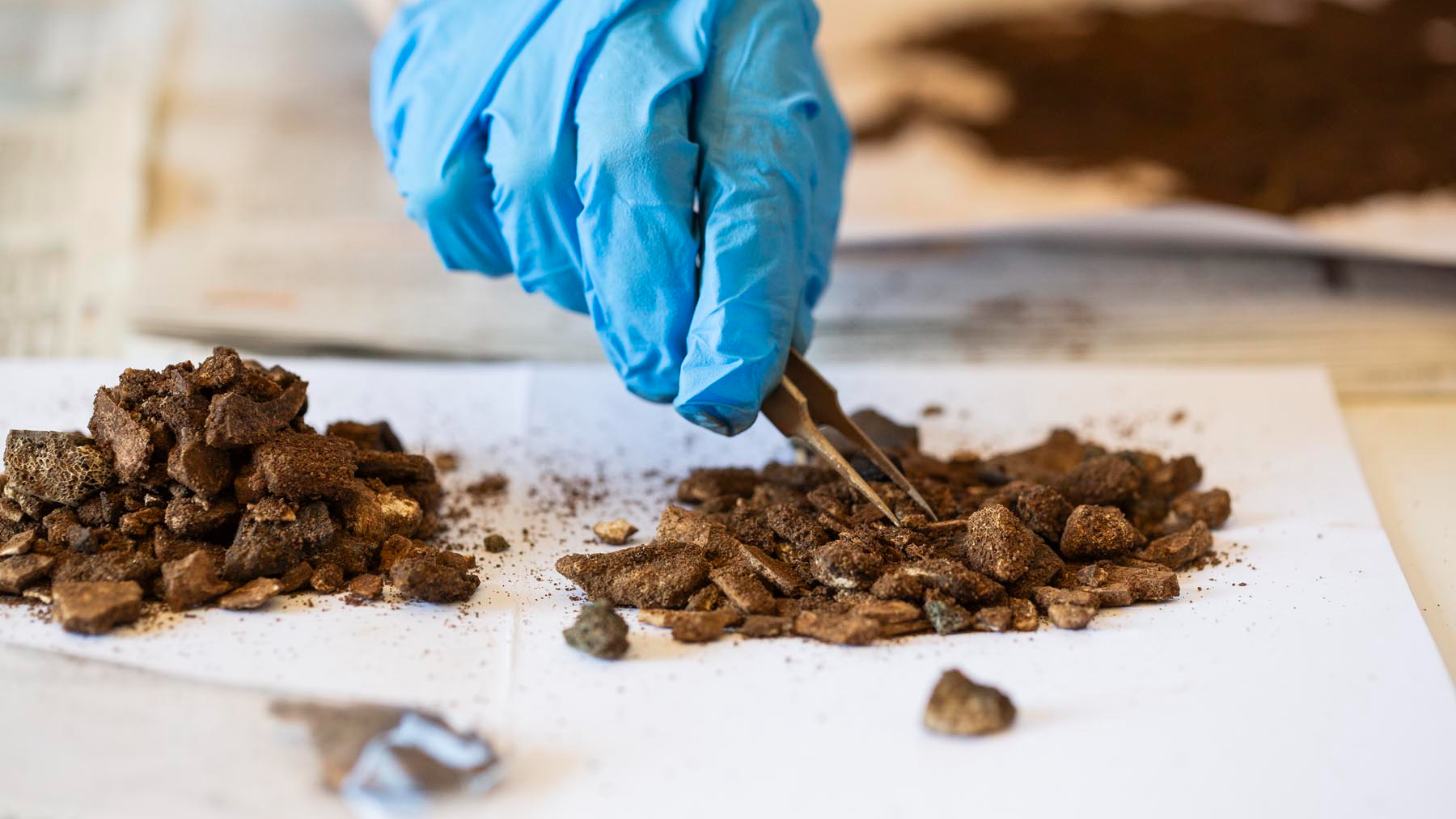
A copper bucket found at Sutton Hoo in England decades ago is much more than a pretty artifact: A new micro-excavation of the sixth-century container reveals it held the cremated remains of an elite individual, along with animal bones and an antler comb.
The copper-alloy Bromeswell Bucket was found in 1986 at the Anglo-Saxon ship burial site of Sutton Hoo, but the Byzantine-era bucket predates the ship by at least a century and was likely imported from Turkey.
Ahead of the summer of excavation at Sutton Hoo — which involves a team of archaeologists, conservators and volunteers from the U.K. TV series "Time Team," the U.K.'s National Trust and FAS (Field Archaeology Specialists) Heritage — experts analyzed the contents of the fragmentary bucket, which depicts a North African hunting scene. Previous research that analyzed the inscription, which in Greek read "Use this in good health, Master Count, for many happy years," suggested the bucket may have been a diplomatic gift.
In the new investigation, experts with York Archaeological Trust micro-excavated the bucket, National Trust representatives said in a statement Tuesday (May 20). As they removed the soil from the bucket, the researchers discovered cremated human bones, including fragments of a skull and an ankle, that may have been placed in a bag that has since decomposed.
"We knew that this bucket would have been a rare and prized possession back in Anglo-Saxon times," Angus Wainwright, an archaeologist at the National Trust, said in the statement. "Now we know it was used to contain the remains of an important person in the Sutton Hoo community."
Related: Mysterious origin of iconic Sutton Hoo helmet possibly revealed in new research


But so far, little is known about the person whose cremated bones were buried in the Bromeswell Bucket.
A comb made from antler was discovered with the bones, but experts suggest that both men and women used combs in Anglo-Saxon times to care for their personal appearance and to control lice. Animal bones found in the bucket are fragmentary but hint at a possible horse sacrifice.
Small amounts of cremated bone will be radiocarbon-dated to better understand how the bucket fits into the Sutton Hoo site. Ancient DNA may also survive on the comb itself, which could potentially reveal the deceased's sex.
While Sutton Hoo is best known for its magnificent ship burial, the area was densely populated and part of a busy trade network in the sixth and seventh centuries. The Sutton Hoo treasures are diverse, including pagan and Christian artifacts, and were brought there from all over Europe and the Middle East.
The Bromeswell Bucket "is a remarkable mixture — a vessel from the southern, classical world containing the remains of a very northern, very Germanic cremation," Helen Geake, an Anglo-Saxon expert for "Time Team," said in the statement. "It epitomises the strangeness of Sutton Hoo."
Excavation at Sutton Hoo is ongoing through June 13.
"This next phase of the dig offers an incredible opportunity to continue uncovering the secrets of Sutton Hoo, and we can't wait to see what new discoveries await us in 2025," Tim Taylor, creator and producer of "Time Team," said in the statement.







